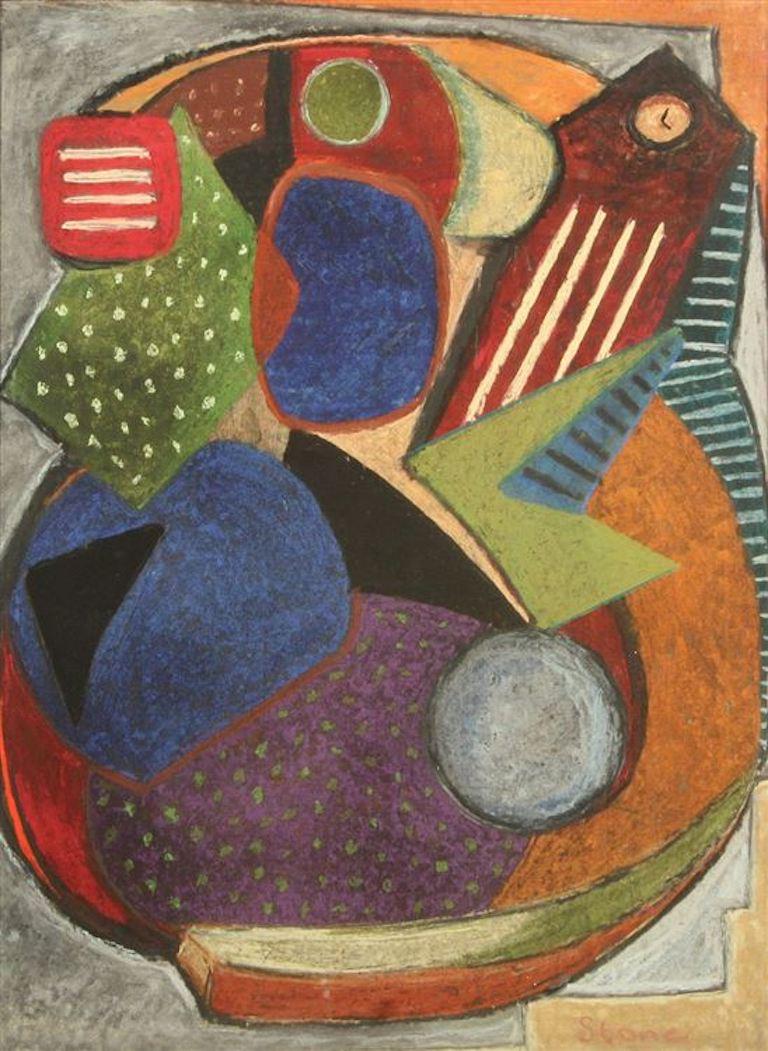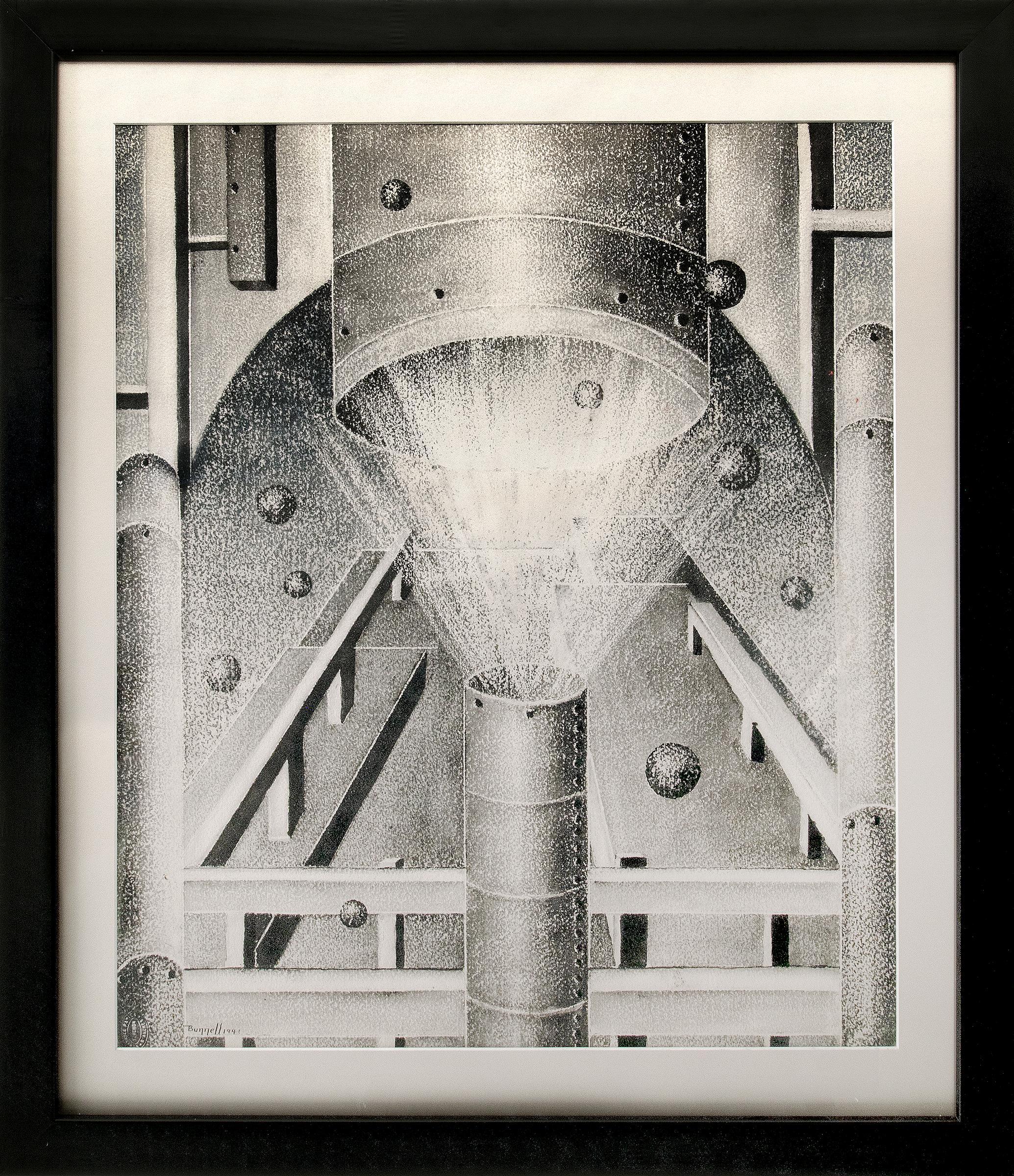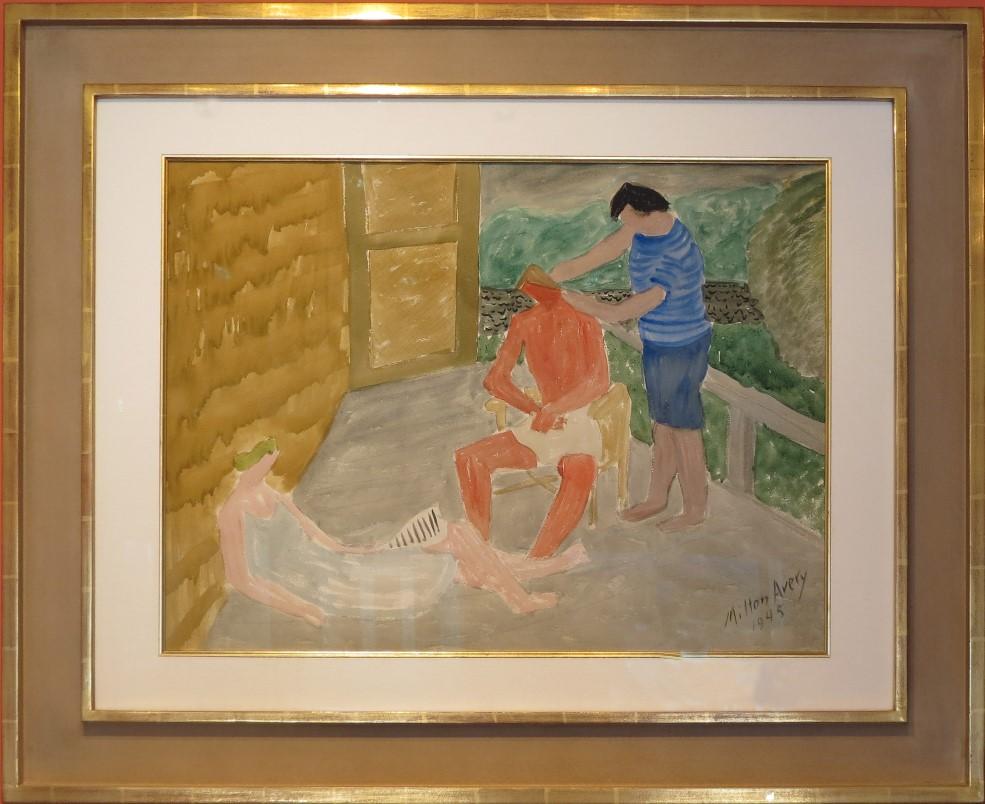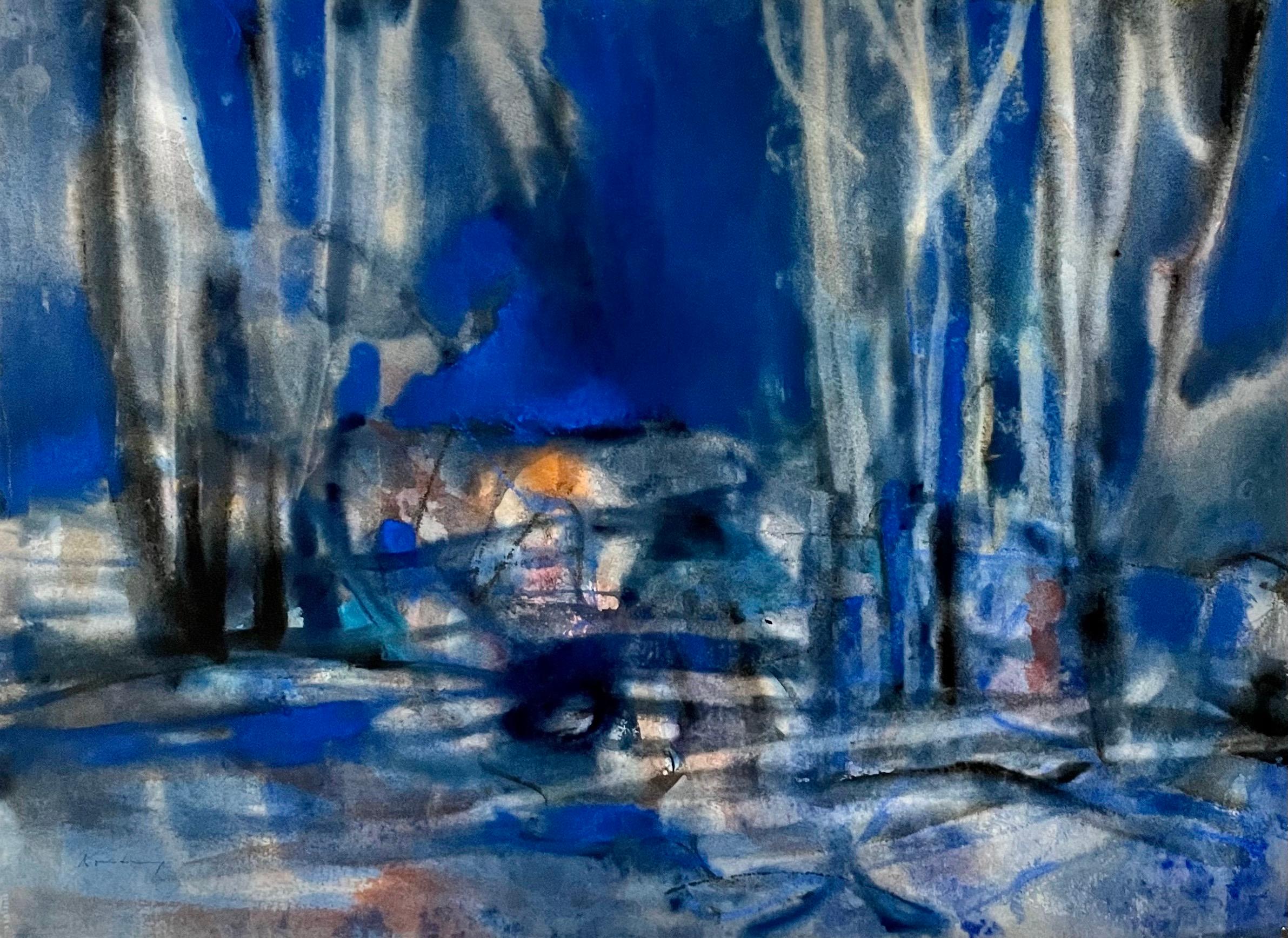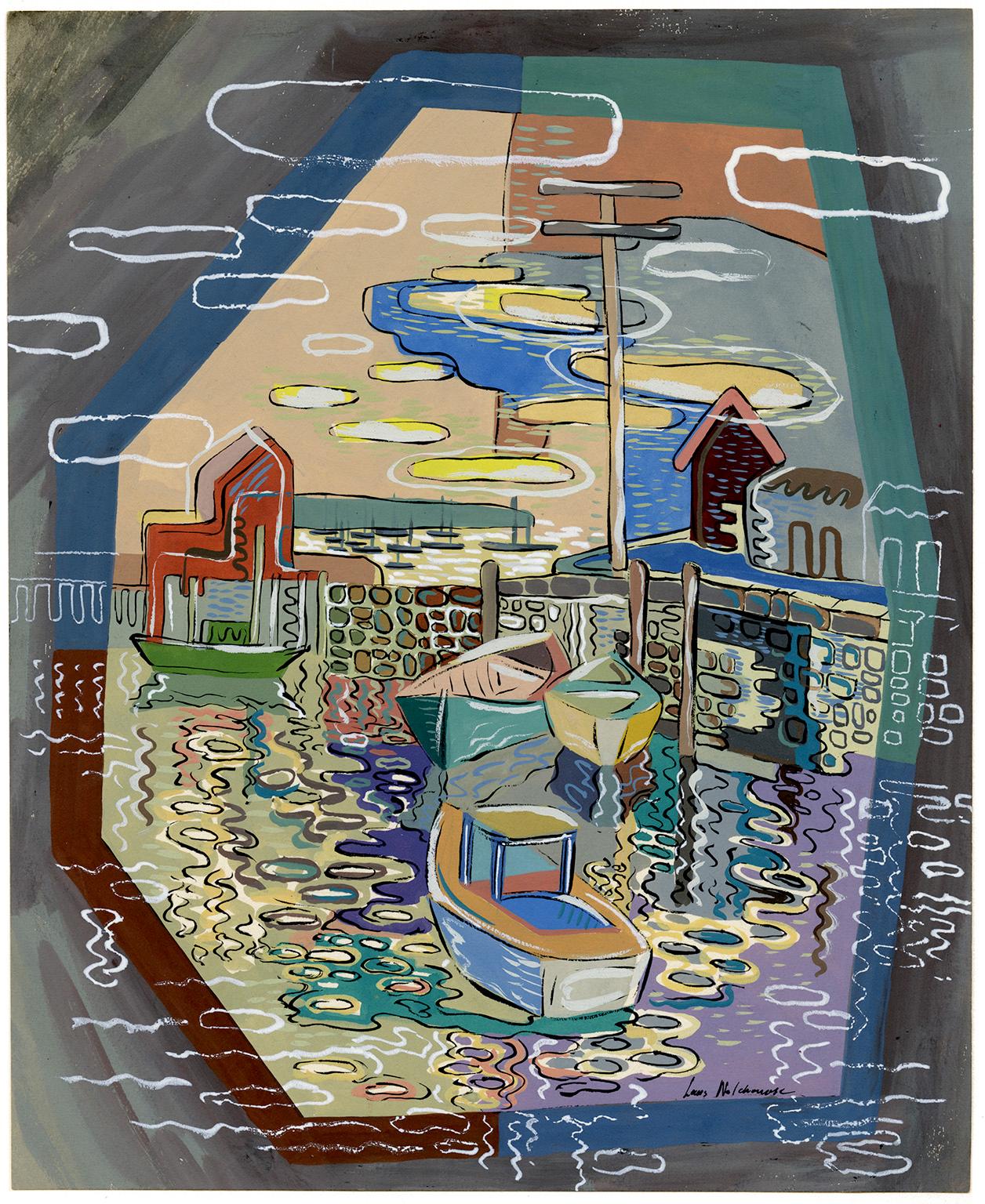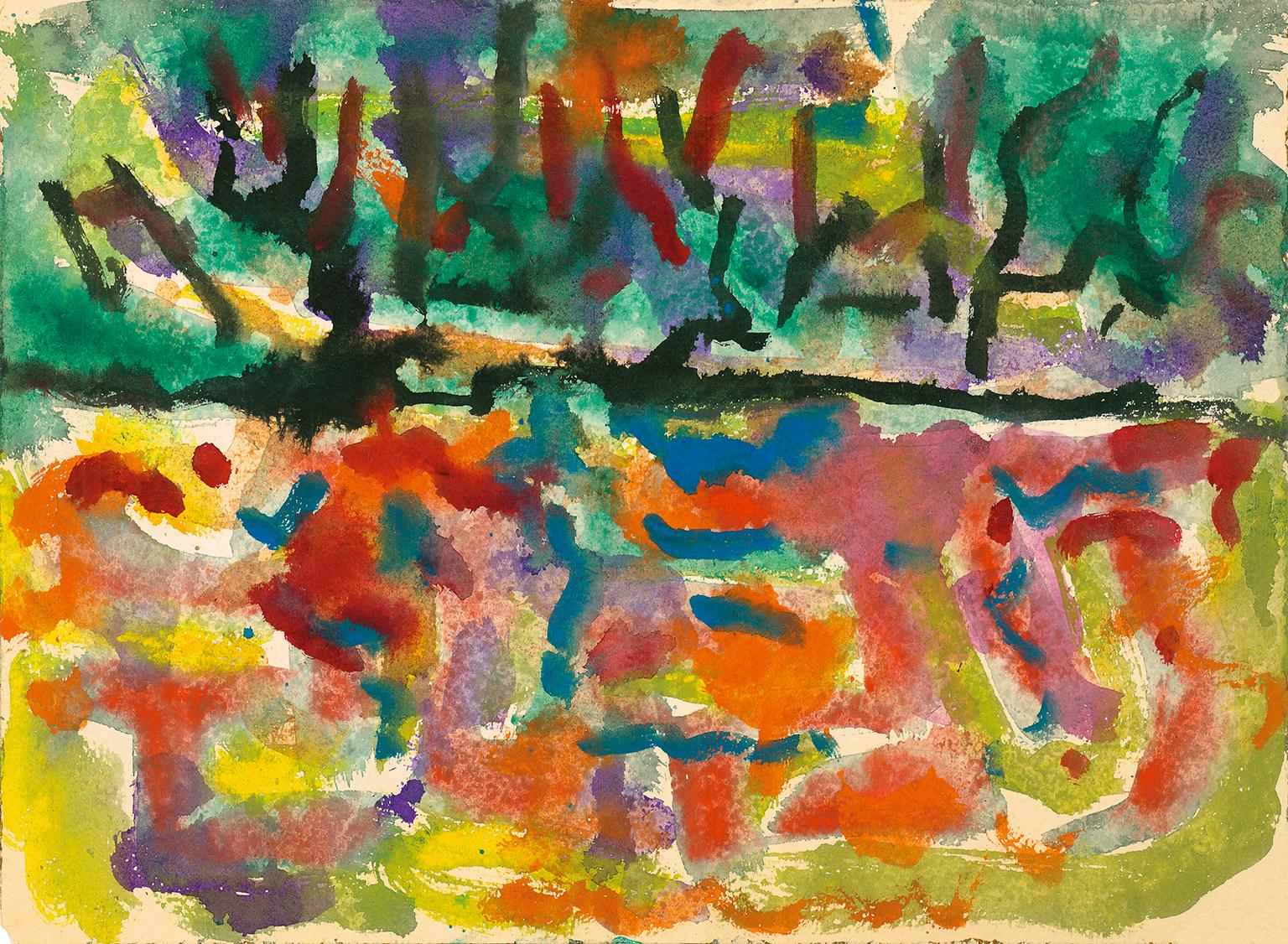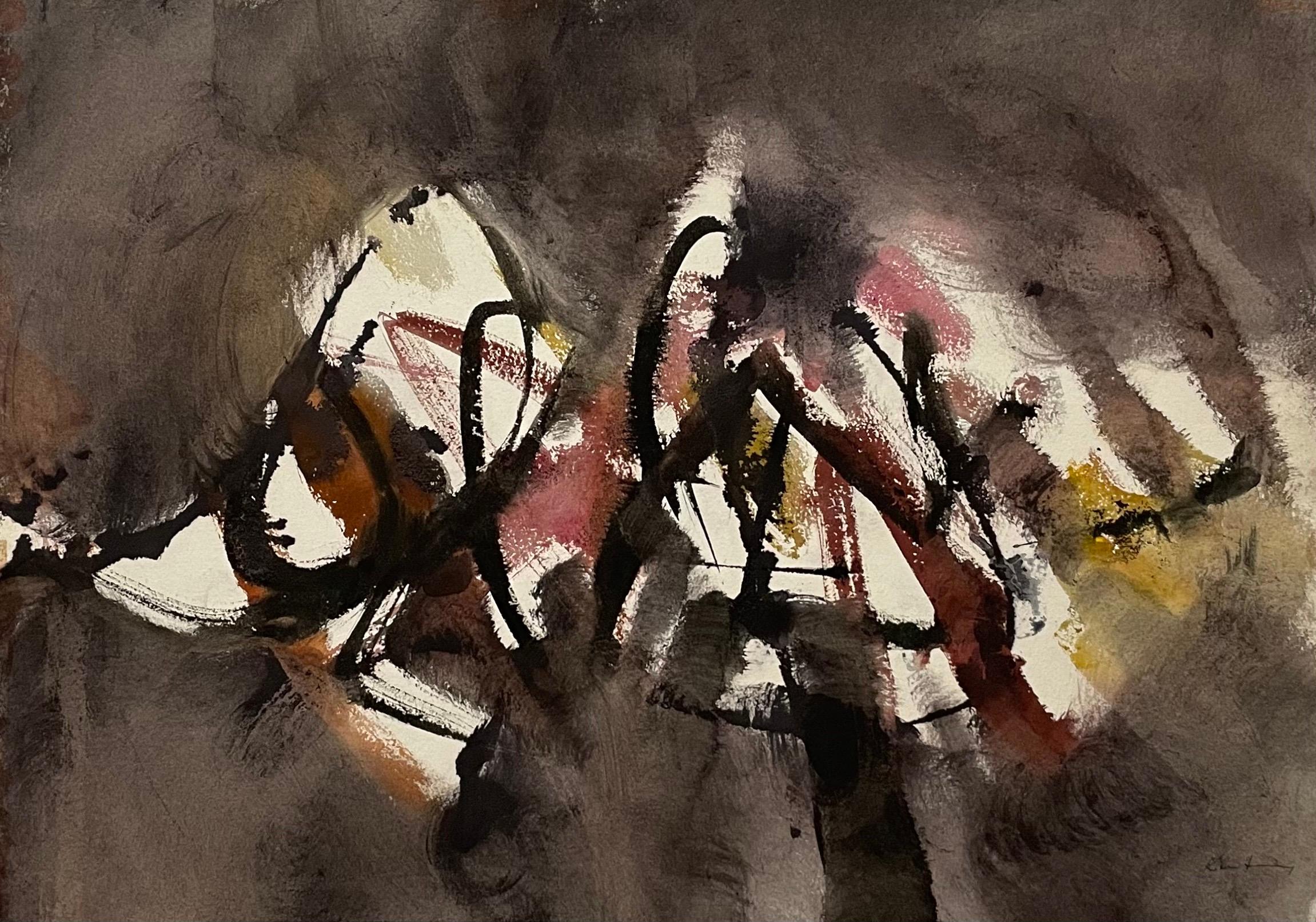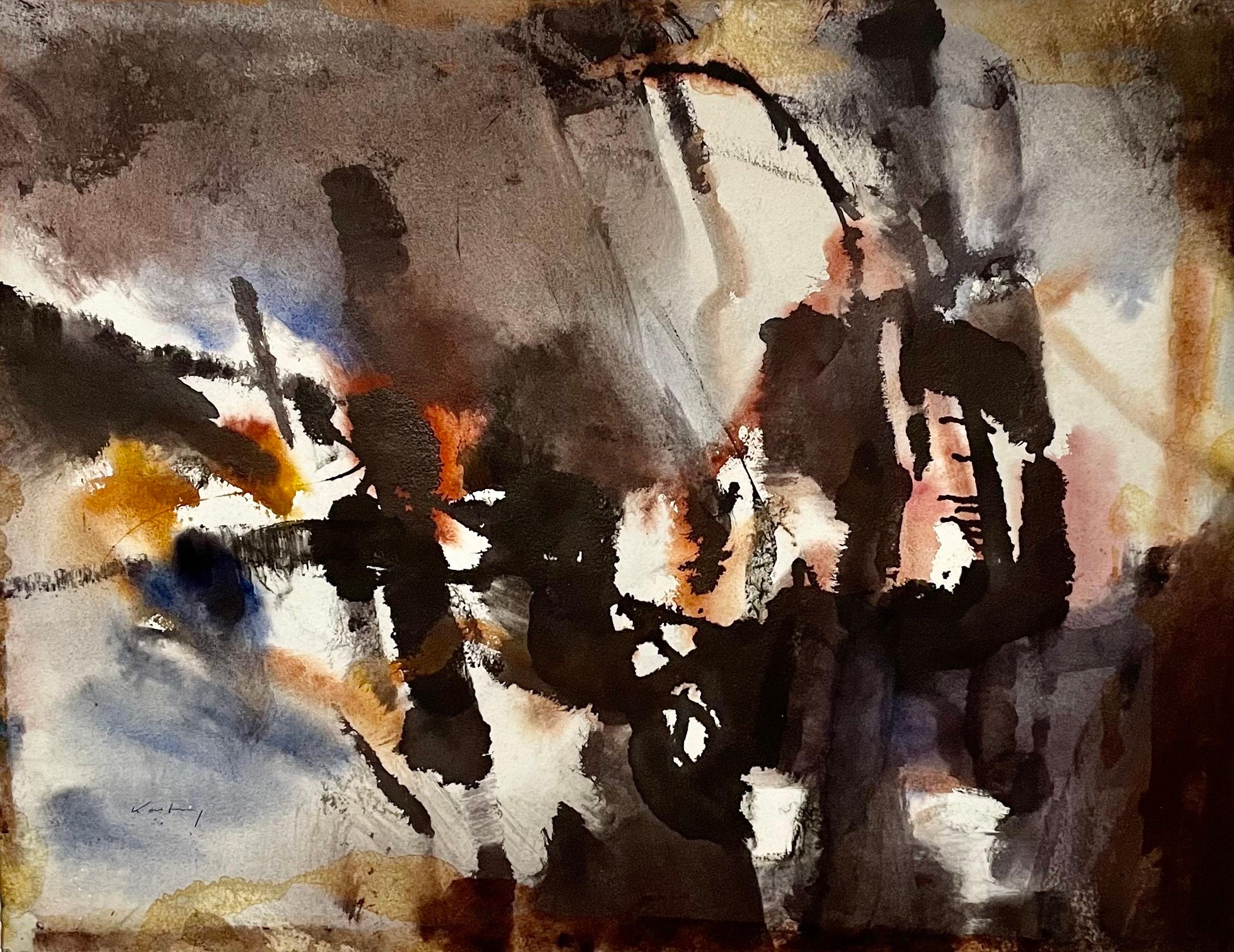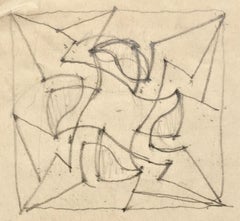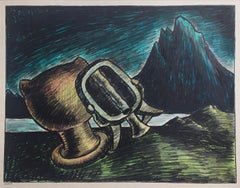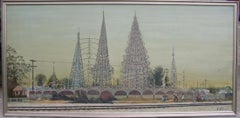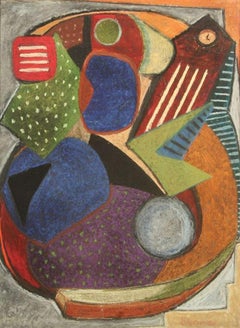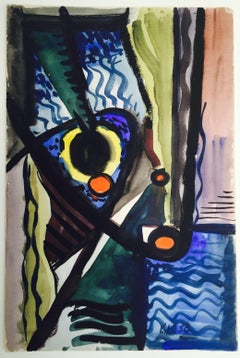
UNTITLED ABSTRACT COMPOSITION
View Similar Items
Want more images or videos?
Request additional images or videos from the seller
1 of 7
Karl BaumannUNTITLED ABSTRACT COMPOSITION1938
1938
About the Item
- Creator:Karl Baumann (1911 - 1984, American)
- Creation Year:1938
- Dimensions:Height: 18 in (45.72 cm)Width: 12 in (30.48 cm)
- Medium:
- Movement & Style:
- Period:
- Condition:
- Gallery Location:Santa Monica, CA
- Reference Number:1stDibs: LU41131858733
About the Seller
5.0
Recognized Seller
These prestigious sellers are industry leaders and represent the highest echelon for item quality and design.
Platinum Seller
These expertly vetted sellers are 1stDibs' most experienced sellers and are rated highest by our customers.
Established in 1977
1stDibs seller since 2016
262 sales on 1stDibs
Typical response time: 1 hour
Associations
International Fine Print Dealers Association
More From This SellerView All
- 2 STUDIES FOR REVOLUTION II (Grosvenor School Color Linocut)By Cyril PowerLocated in Santa Monica, CACYRIL POWER (British 1872-1951) STUDIES FOR THE COLOR LINOCUT REVOLUTION II, 1931 Pencil on thin wove paper. Unsigned. Consists of two 3 inch square pencil drawings on one sheet of thin wove paper 10 x 7 3/8 inches. Preliminary studies for Power's Grosvenor School...Category
1930s Futurist Abstract Drawings and Watercolors
MaterialsPencil
- SURREALIST LANDSCAPEBy Edward HagedornLocated in Santa Monica, CAEDWARD HAGEDORN (AMERICAN 1902 – 1982) SURREAL LANDSCAPE 1931 mixed media on paper, Graphite, ink and watercolor. Unsigned. Dtaed 2/26/31, in ink lower left margin. Image 13 3/4 x 16 1/2 inches. On a large sheet 20 x 25 inches. Provenance: Hagedorn estate, Around the mid 1980's The Hagedorn estate was dispersed in Berkeley by a local dealer. This drawing was part of a group of Hagedorn works on paper that I acquired from that dispersal. Much of the balance was later acquired the Struart Denenberg Fine Art. Denenberg published a very fine book on the artist's work. EDWARD HAGEDORN: CALIFORNIA MODERNIST, RESTLESSNESS AND RESTRAINT Hardcover – January 1, 2009 Subsequently Hagedorn's works on paper have been acquired by many museums and some accompanying exhibitions. ALL OF THE COMMENTS BELOW ARE FROM THE FOLLOWING EXHIBITION EDWARD HAGEDORN (1902-1982) American Modernist A New Traveling Exhibition “VOLCANOS, WRECKS, RIOTS, & NUDES”, EDWARD HAGEDORN (1902-1982) premiere at the Danforth Museum. Framingham, MA, in March 2016. The exhibition includes 75 works of art in various mediums and is accompanied by the first monograph devoted to the artist’s work with essays by leading curators, critics, and art historians. Edward Hagedorn was a true Modernist who created a trove of powerful works on paper--drawings, watercolors, oils, and original graphics that reveal the hand of a master draftsman and the mind of an astute political observer. He rejected the general trend in early 20th century California of local landscapes and coastal views, becoming virtually the single voice of Expressionism. He conveyed the darkness and upheaval that gripped the country in the depression years between the two World Wars, 1925- 1935, more forcefully than any of his contemporaries, influenced by German art of the time, engaging in modernist styles of Expressionism and Surrealism. Hagedorn’s skeletons are ferocious yet somehow endearing; printed in deep black ink on off-white paper, they march across Lilliputian landscapes of grim disorder and destruction. Comets and volcanoes explode in fauvist colors, their other-worldly fluorescent temperas framed in black, while nude female figures, executed in exquisitely refined pen and ink, or graphite line drawings, are as economical in their means as Matisse, and can be compared with the neo-classical drawings of Picasso. Among his most lyrical works of the 1920s is a series of rhythmically abstracted watercolor and ink views of Golden Gate Park, evoking the sensual demi-geometries of Balthus, Derain , and early Mondrian. American Modernist Edward Hagedorn (1902-1982) was born in San Francisco of German descent; his mother (née Kafka) died in childbirth, and he was legally adopted and raised by his grandmother and aunt. After attendance at the San Francisco School of Fine Arts in the early 1920s, by age 22 he had a studio in the famed "100" block of Montgomery Street ("the Monkey Block,") then a haven for bohemians. In 1926, a year of tremendous importance in California artists' embrace of modern art, the Oakland Art Gallery, with the guidance and inspiration of their European representative Emmy (Galka) Scheyer, was the first museum in the United States to show the art of the "Blue Four," among the leading artists of International Modernism--Paul Klee, Lyonel Feininger, Alexei Jawlensky...Category
1930s American Modern Mixed Media
MaterialsWatercolor
$3,000 Sale Price33% Off - WATTS TOWERBy Gloria StuartLocated in Santa Monica, CAGLORIA STUART (1910 – 2010) WATTS TOWERS, 1971 Oil on canvas, signed lower right, 24” x 50 ½”. Gloria Stuart, an Academy Award nominated actress was also a painter, illustrator and printmaker. She most recently portrayed Rose in the blockbuster film “Titanic”. She was a Santa Monica native. In 2013 The Los Angeles Museum of Art, LACMA exhibited a nearly identical painting looking from the south, the same size and frame. Last 5 photos show the example at LACMA. One shows theirs in a distant room with a major Thomas Hart Benton painting in the foreground A VERY IMPORTANT MULTI-LEVELED DOCUMENT OF LOS ANGELES AND HOLLYWOOD CULTURAL HSTORYi The following is from her obituary in the Los Angeles Times upon her death in September 2010 at the age of 100 Gloria Stuart, a 1930s Hollywood leading lady who earned an Academy Award nomination for her first significant role in nearly 60 years — as Old Rose, the centenarian survivor of the Titanic in James Cameron’s 1997 Oscar-winning film — has died. She was 100. .......She devoted much of her time to designing and printing artists’ books (handmade, letter-press printed books in limited editions, with her own artwork and writing). Her work is in the J. Paul Getty Museum in Los Angeles, the Metropolitan Museum of Art in New York City, the Victoria and Albert Museum in London and other museums. Stuart, a founding member of the Screen Actors Guild who later became an accomplished painter and fine printer, died Sunday night at her West Los Angeles home, said her daughter, writer Sylvia Thompson. Stuart had been diagnosed with lung cancer five years ago. “She also was a breast cancer survivor,” Thompson said, “but she just paid no attention to illness. She was a very strong woman and had other fish to fry.” In July the actress was honored at an “Academy Centennial Celebration With Gloria Stuart” at the Samuel Goldwyn Theater in Beverly Hills. “She was a charming and beautiful leading lady in the ‘30s, and I never understood why her career didn’t go further at that time,” film historian and critic Leonard Maltin, who interviewed Stuart on stage at the event, told The Times on Monday. As for Stuart’s high-profile comeback in “Titanic”: “She was thrilled by the attention that that performance brought her and really wanted to win that Oscar. I thought she hit just the right notes in that performance. She was wry and engaging.” As a glamorous blond actress under contract to Universal Studios and 20th Century Fox in the 1930s, Stuart appeared opposite Claude Rains in James Whale’s “The Invisible Man” and with Warner Baxter in John Ford’s “The Prisoner of Shark Island.” She also appeared with Eddie Cantor in “Roman Scandals,” with Dick Powell in Busby Berkeley’s “Gold Diggers of 1935” and with James Cagney in “Here Comes the Navy.” And she played romantic leads in two Shirley Temple movies, “Poor Little Rich Girl” and “Rebecca of Sunnybrook Farm.” But mostly she played what Stuart later dismissed as “stupid parts with nothing to do” — “girl reporter, girl detective, girl nurse” — and “it became increasingly evident to me I wasn’t going to get to be a big star like Katharine Hepburn and Loretta Young.” After making 42 feature films between 1932 and 1939, Stuart’s latest studio contract, with 20th Century Fox, was not renewed. She appeared in only four films in the 1940s and retired from the screen in 1946. By 1974, “the blond lovely of the talkies” had become an entry in one of Richard Lamparski’s “Whatever Happened to” books. Writer-director Cameron’s $200-million “Titanic” changed that. Stuart played Rose Calvert, the 100-year-old Titanic survivor who shows up after modern-day treasure hunters searching through the wreckage of the sunken ship find a charcoal drawing of her wearing a priceless blue diamond necklace. Stuart’s performance as Old Rose frames the 1997 romantic- drama that starred Leonardo DiCaprio as lower-class artist Jack Dawson...Category
1970s American Modern Landscape Paintings
MaterialsOil
- SELF PORTRAIT IN A GERMAN MANNER - Large MonotypeBy Karl SchragLocated in Santa Monica, CAKARL SCHRAG (German - American 1912 - 1995) SELF PORTRAIT IN THE GERMAN MANNER, 1991 Monotype, Signed titled, dated and annotated "Monotype with touches of Oil color, I /I" Plate an...Category
1990s American Modern Figurative Prints
MaterialsMonotype
- A Winter - Seeming Summers NightBy June WayneLocated in Santa Monica, CAJUNE WAYNE (1918 - 2011) A WINTER - SEEMING SUMMER'S NIGHT, 1957 From the John Donne Series. (Conway 122, Basket 106: Gilmour 50) Lithograph signed, title...Category
1950s American Modern Figurative Prints
MaterialsLithograph
$1,320 Sale Price20% Off - THE RUG WEAVERBy Gustave BaumannLocated in Santa Monica, CAGUSTAVE BAUMANN (1881 – 1971) THE RUG WEAVER, 1910 (Chamberlain 26) Color woodcut signed in pencil. Unnumbed from an edition 100 as published in the Hills o’ Brown...Category
1910s American Modern Figurative Prints
MaterialsWoodcut
You May Also Like
- Abstract Mid 20th Century WPA Non Objective American Modernism New Hope ModernBy Louis StoneLocated in New York, NYAbstract Mid 20th Century WPA Non Objective American Modernism New Hope Modern.mixed media. 21 x 16 (sight). Housed in a hand carved frame. Louis King Stone ...Category
1940s American Modern Mixed Media
MaterialsGouache, Board
- 1940s American Modernist Abstracted Industrial Watercolor Ink Charcoal PaintingBy Charles Ragland BunnellLocated in Denver, COCharles Bunnell original vintage 1941 signed painting from the artist's Black and Blue Series, Abstract Structure style. Watercolor, Ink and Charcoal on paper in colors of black, wh...Category
1940s American Modern Abstract Drawings and Watercolors
MaterialsCharcoal, Ink, Watercolor
- Abstract Work on Paper Mid-Century Modernism Greek American Gouache DrawingBy Jean XceronLocated in New York, NYAbstract Work on Paper Mid-Century Modernism Greek American Gouache Drawing. A modernist artist who emigrated to America from Greece in 1904, when he was fourteen years old, Jean Xceron is described as having a reputation as an artist that has mysteriously fallen into obscurity---especially since he was reportedly quite prominent during his lifetime. However, a partial explanation of that omission is the fact that many of his papers and early records have been lost. He was a painter of biomorphic abstractions and did collages, which were influenced by Dadaism. Xceron was active in New York City when modernism was gaining influence. Of him during this period, it was written that his artistic role was "a vital link between what is commonly termed as the first-generation (the Stieglitz group, the Synchromists, etc.) and second-generation, the American Abstract Artists, the Transcendental Painting...Category
1940s American Modern Abstract Drawings and Watercolors
MaterialsPaper, Gouache
- MODERNIST DRAWING New Hope Mid-Century WPA Abstract Non-Objective Jazz ModernBy Ramstonev (Ramsey/Stone/Evans co-operative)Located in New York, NYMODERNIST DRAWING New Hope Mid-Century WPA Abstract Non-Objective Jazz Modern. Signed with a "Ramstonev" stamp lower right. RAMSTONEV Cooperative Art Project (1937-1939). In the late 1930s, Charles Ramsey became close friends with Charles Evans and Louis Stone. He persuaded them to join him teaching his New Hope summer classes in non-objective painting. Soon, a history-making collaboration began. In 1937, meeting in Evans' studio at the rear of Cryer's Hardware store on Main Street in New Hope, a decision was made to establish the Co-Operative Painting Project. They were intrigued by the cooperative ad-lib process by which jazz musicians created their music. Believing this to be the quintessential American contribution to music, they theorized that a similar result might be obtainable with art, a "visual jam session." This particlarly fascinated Ramsey, who was a jazz buff and had a large collection of jazz records. The objective was to jointly collaborate in the creation of a painting as well as applying collective criticism during its creation. By creating forward movement by general consent, they believed they could produce a higher level of beauty. By consensus it was decided that subject matter would be non-objective. Up to eight people would participate and stop when the painting "felt" finished by common agreement. These co-operative works were done in several different mediums- the majority in pastel, but some in watercolor, gouache, graphite or cut paper collage. On occasion, the group would create a series, as opposed to a single work, created in steps by three or four artists. One of the occasional participants was famed New Hope poet, Stanley Kunitz. These series could range in number from four to sixteen paintings in each. The first of a series would be very basic and the last a fully finished work. In the scope of importance among the New Hope Modernist...Category
1930s American Modern Abstract Drawings and Watercolors
MaterialsGouache, Paper, Watercolor
- "Country Haircut"By Milton AveryLocated in Lambertville, NJJim’s of Lambertville Fine Art Gallery is proud to offer this piece by Milton Avery (1885 – 1965). Milton Avery was a prominent Modernist painter whose work combined abstraction and...Category
1940s American Modern Figurative Drawings and Watercolors
MaterialsPaper, Watercolor, Gouache
- Large Modernist Abstract Expressionist Gouache Painting Bauhaus Weimar ArtistBy Pawel KontnyLocated in Surfside, FLAbstract watercolor or gouache composition bearing the influence of the earlier color-block compositions of Paul Klee. Pawel August Kontny, (Polish-German-American artist) He was born in Laurahuette, Poland, in 1923, the son of a wealthy pastry shop owner. In 1939 he began studying architecture in Breslau where he was introduced to the European masters and to the work of some of the German Expressionists, soon afterward banned as "degenerate artists" and removed from museums throughout Germany by the Nazi regime. His studies were interrupted by World War II. Drafted into the German army, traveling in many countries as a soldier, he sketched various landscapes but in 1945, he was captured and held as a prisoner of war in Italy. After the war, he studied at the Union of Nuremberg Architects to help design buildings to replace ones destroyed in the war. He recorded his impressions of the local population and the landscapes through his watercolors and drawings. Pawel Kontny thereafter moved to Nuremberg, Germany, becoming a member of the Union of Nuremberg Architects and helping to rebuild the city's historic center. He soon decided to concentrate on his professional art career. He married Irmgard Laurer, a dancer with the Nuremberg Opera. Pavel Kontny 's career as an artist was launched with his participation in an all German exhibition, held at the Dusseldorf Museum in 1952. He held one-man shows in Germany, Switzerland and the United States. During his trip to the United States in 1960, Kontny became instantly enamored with Colorado, and decided to relocate to Cherry Hills with his wife and two children. He quickly established himself in the local art community, being affiliated for a time with Denver Art Galleries and Saks Galleries. His subject matter became the Southwest. During this time he received the Prestigious Gold Medal of the Art Academy of Rome. His extensive travel provided material for the paintings he did using his hallmark marble dust technique. he also worked equally in pastel, watercolor, charcoal and pencil-and-ink. in a style which merged abstraction and realist styles, influenced by Abstract Expressionist painting and South Western American landscapes. In the early 1960s he was one of only a few European-born professional artists in the state, a select group that included Herbert Bayer (1900-1985), a member of the prewar Bauhaus in Weimar and Dessau, Germany, and Roland Detre (1903-2001), a Hungarian modernist painter. As a Denver, Colorado resident, Pavel Kontny exhibited at galleries and museums throughout the United States, Germany and Japan. There, he was inspired by frequent trips to Native American pueblos in the Southwest, as well as by the study of the Plains Indians of Montana and Wyoming. Over the years Kontny had a number of students and generously helped young artist by hosting exhibitions at his Cherry Hills home. For many years he generously donated his paintings to support charitable causes in Denver. Influences during his European years included German pastelist C.O. Muller, German Informel painter Karl Dahmen and Swiss artist, Hans Erni. In the early 1950s his painting style showed the influence of the Die Brücke (The Bridge), a group of German expressionist artists formed in Dresden in 1905 who had a major impact on the evolution of modern art in the twentieth century in Germany. By the middle of the decade his style incorporated more referential abstraction and total abstraction, resulting in part from his study of Hans Hartung, a German artist based in Paris who exhibited his gestural abstract work in Germany. The American moon landing in 1969 inspired Paul Kontny...Category
20th Century American Modern Landscape Paintings
MaterialsWatercolor, Archival Paper
